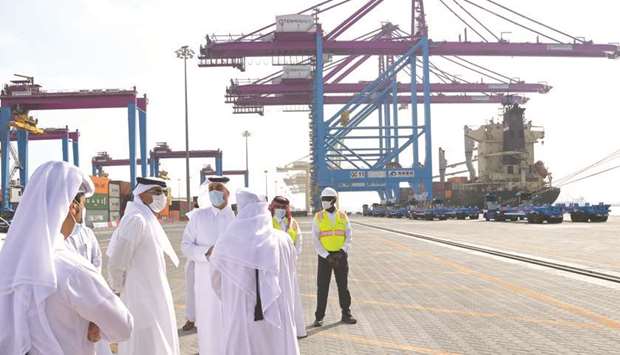Qatar's 530,000sq m ‘Strategic Food Security Facilities’ or SFSF, being built at the Hamad Port at an estimated cost of QR1.6bn, is 85% complete and will be dedicated to nation by the second quarter (Q2) of 2021.
Hamad Port project steering committee is supervising the construction and development of SFSF for storing, processing, refining, and preparing three main food commodities (sugar, rice, and edible oils), which will be available for use in the local, regional, and global markets.
"The current overall progress of the project is around 85%. Work is ongoing to complete the construction works and targeted to be operational by Q2, 2021," the Ministry of Transport and Communications (MoTC) said, adding the tender document for the facilities operator in co-operation with a global consulting firm is completed.
The construction of the rice storage silos has been 95% completed. Finishing and MEP works in progress. Rice processing facility is also 95% complete.
The rice facility will receive 20% brown rice, 80% white rice. Brown rice will be milled first and then it will go to long storage silos where the white rice will be stored for a minimum of two years in silos, and both types will be milled before packing. It can produce bagged rice with a capacity of 550 MT (metric tonnes) per day ready for distribution to the market.
The SFSF comprise 51 concrete storage silos with a total storage capacity of about 300,000 MT. There are two storage warehouses (double and triple module) to store rice. Total area of double module warehouse is 10,000sq m with storage capacity of 28,000 MT; and the total area of triple module warehouse is 15,000sq m with storage capacity of 44,000 MT.

HE the Prime Minister and Interior Minister Sheikh Khalid bin Khalifa bin Abdulaziz al-Thani listening to a briefing by HE the Minister of Transport and Communications Jassim Seif Ahmed al-Sulaiti, during a visit to the Hamad Port
While processing the brown rice, there will be waste in the form of broken/ coloured rice. The SFSF project considers in its design the use of byproducts either as rice flour or process the same for animal feed.
Highlighting that 90% of the edible oil tanks manufacturing works have been completed; MoTC said in SFSF, the oil will be pumped from ship to the intermediate storage tanks and then to the oil drying section. Later it will be stored in long term storage tank which is for a minimum of two years.
As and when required this oil will be refined in the refinery section and then it will be stored in the refined oil tanks. From there it will be sent to the filling section where the oil will be filled and packed in PET bottles.
"There will be four different types of oils; sunflower, corn, palm and olive oil. The facility can produce oil in bottles with a capacity of 326 MT per day ready for distribution to the market," it said.
As for the edible oil plant and tanks facility, it consists of 44 stainless steel oil storage tanks with 36 to be used for long term and eight for the final product. The total storage capacity of oil tanks will be 120,000 MT. Two separate filling lines will be used to bottle the refined oil. The total storage capacity of oil warehouse will be 13,000 MT.
MoTC said about 90% of the construction works for the sugar warehouses (final product) have been completed and work is underway on the construction of Warehouse 1 sugar storage and it is about 60% complete.
The total area of Warehouse 1 is 15,000sq m and has a total storage capacity of 130,000MT. The total area of Warehouse 2 (quadruple module warehouse) is 21,000sq m and has a total storage capacity of 65,000 MT.




